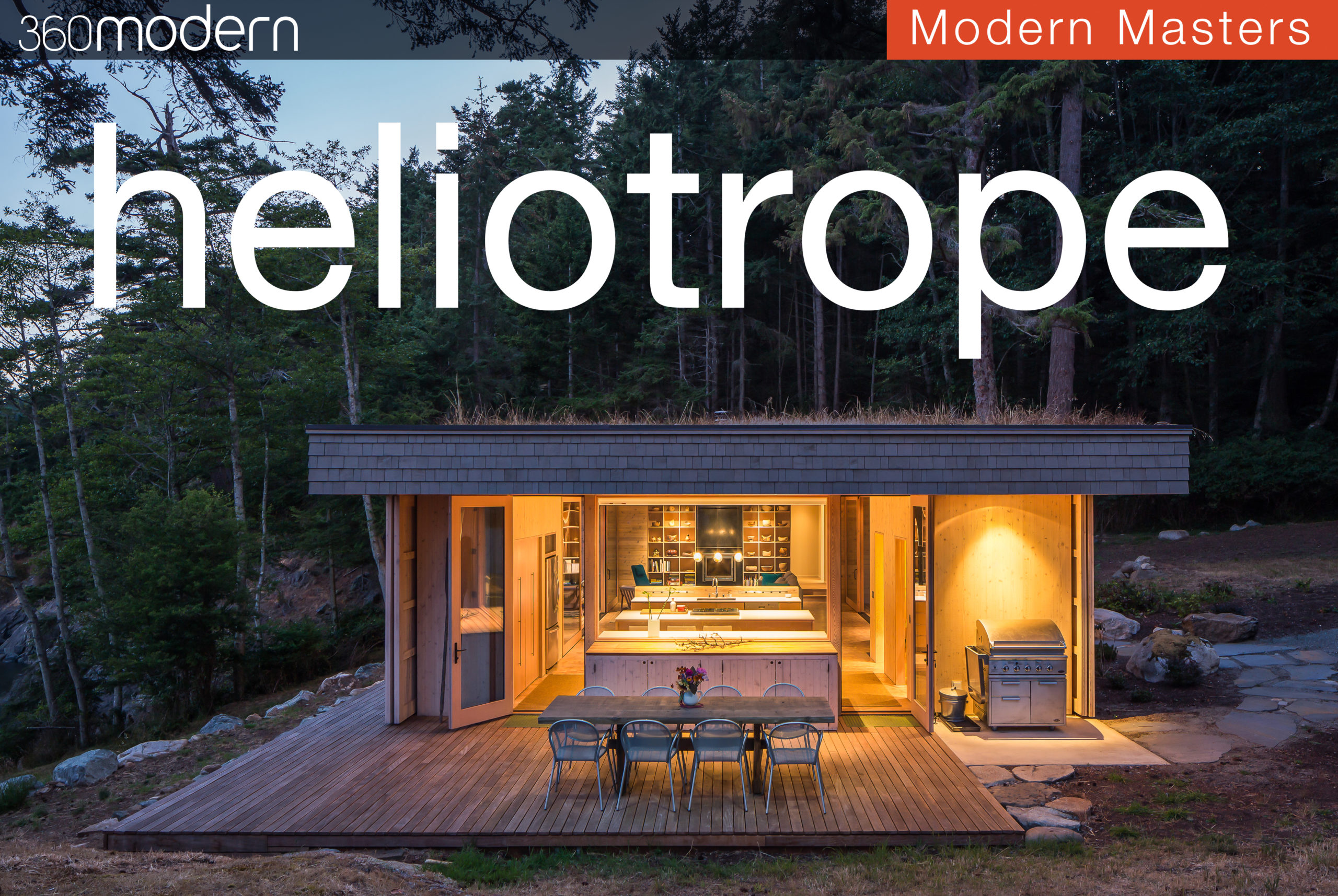This Seattle architecture firm doesn’t compromise environmental consciousness for good design.
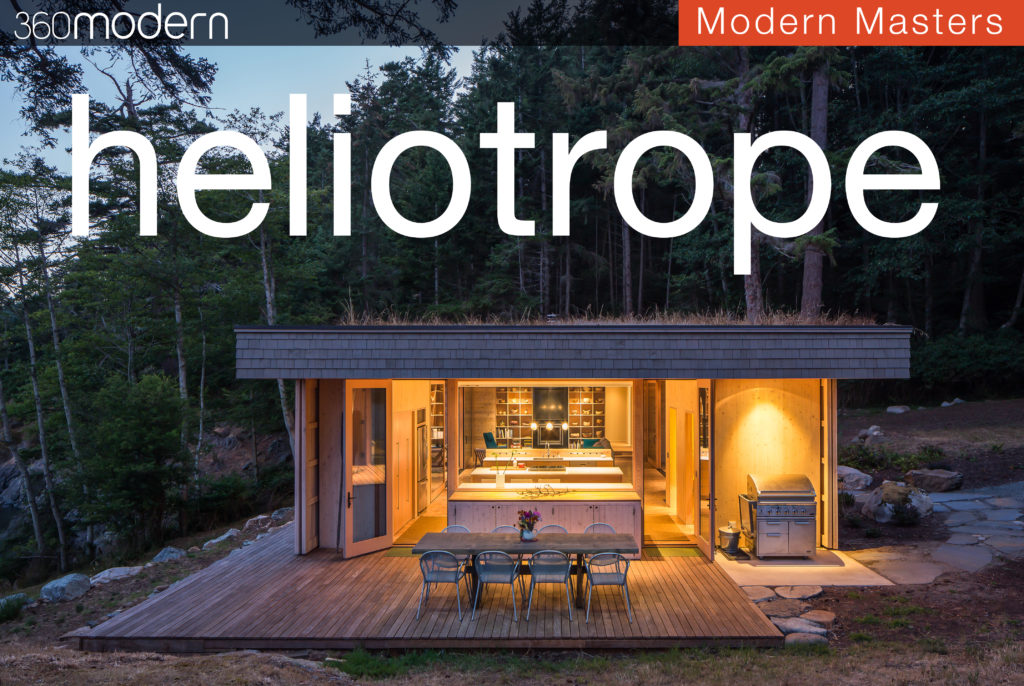
By Claire Butwinick
Modern Masters is a recurring 360Modern digital feature, spotlighting the top modern architects, designers, and builders in the Pacific Northwest and beyond.
From refined douglas fir retreats on Orcas Island to locally sourced stucco oases in the Bahamas, Heliotrope’s homes not only pay homage to their natural surroundings, they also aim to preserve them. Since 1999, the eight-time AIA award-winning architecture firm has designed dozens of high-end residences and commercial spaces that hold modern design and sustainability to the highest standards. Using ethical materials and drawing inspiration from mid-century design greats along the west coast, founding principals Joe Herrin and Mike Mora create contemporary, yet timeless abodes that are built to last. Below, Herrin and Mora share how Heliotrope came to be, what it was like to renovate one of their design idol’s mid-century homes, and which up-and-coming firms are on their radar.
What inspired you and Joe to establish Heliotrope in 1999?
Mike Mora: A shared desire to create thoughtful, enduring works of architecture in collaboration with good people. To create a studio environment where the process is as fulfilling as the outcome, and meaningful work is produced.
What modern designers or techniques from the past inspire Heliotrope’s design aesthetic today?
Joe Herrin: We are west coast natives and have been most influenced by the work of modern masters from up and down the coast, particularly LA luminaries such as Richard Neutra, John Lautner, and Pierre Koenig. Several local Architects, including Ralph Anderson, Paul Kirk, and Roland Terry, produced equally strong work with a deep connection to place. In our work, we strive to live up to their legacy and to overlay contemporary issues around ecological footprint, resource use, longevity, and durability (a lot of their buildings leaked).
While our work is clearly contemporary, we don’t have a signature style. We are interested in uncovering the unique qualities of each site, as well as each client’s individual interests and sensibilities, looking for solutions that are uniquely appropriate to that particular project. This is undertaken within an underlying ethos around ecology, economy, and human experience.
You mentioned Paul Kirk as one of your PNW design inspirations. What was it like renovating one of his Washington homes?
JH: It was an honor, but we didn’t let that intimidate us. We approached it as we would any renovation project. This house was designed for Paul’s brother Blair, who wanted wall space for art and was less concerned about maximizing the view. He was also apparently not all that interested in the plan diagram extending through both floors of the home. The lower level layout was as strange and awkward as the upstairs pure, bold, and interesting. Our approach to the renovation upstairs was fairly surgical, working to increase view potential, modifying the kitchen/dining experience (opening up the space), and a lot of repairs. Downstairs was a complete do-over in every way, the result being a layout with the same clarity and strength of the floor above.
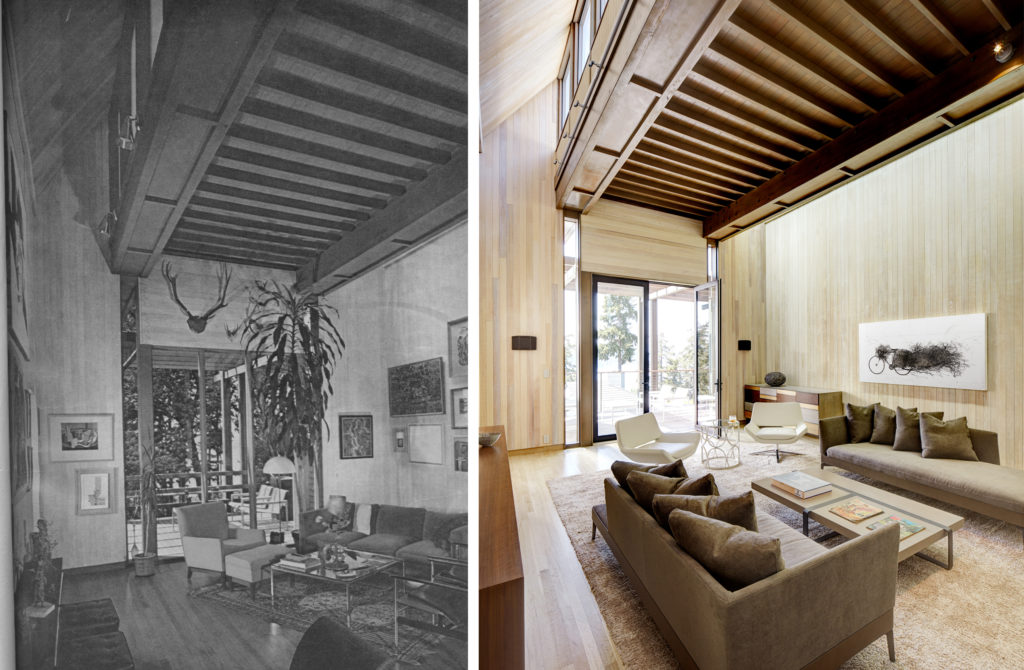
Photo Alex Hayden
When designing the Lone Madrone residence, the local terrain, weather, and materials were deeply considered. How often do environmental and sustainability factors influence your design process?
JH: It is a primary driver in all of our work. In shoreline zones such as the Lone Madrone site, the stakes are incredibly high, as this is a critically endangered species habitat (native salmon, orca). Polluted stormwater and habitat loss in shoreline zones is a huge problem. We strive at minimum for no net habitat loss, however, whenever possible we seek solutions that improve existing conditions. This has been possible on previously developed sites, which is often where our work is located.
Which residential project are you most proud of?
MM: There’s no one winner here. I’m proud of various projects for various reasons. Often for the design solution, but also the way we navigated through a complex set of challenges to successfully complete the assignment. The design solutions I’m most proud of are the ones that find elegance in economy (I’m a big fan of the Super Normal movement). These are solutions that feel so obvious and natural that they couldn’t have been any other way. They also have to endure. Perhaps they have to pass the ten-year test before I can feel pride in the success of the solution. I’m also lucky to have an immensely talented partner, and always in awe of the design solutions he conjures up.
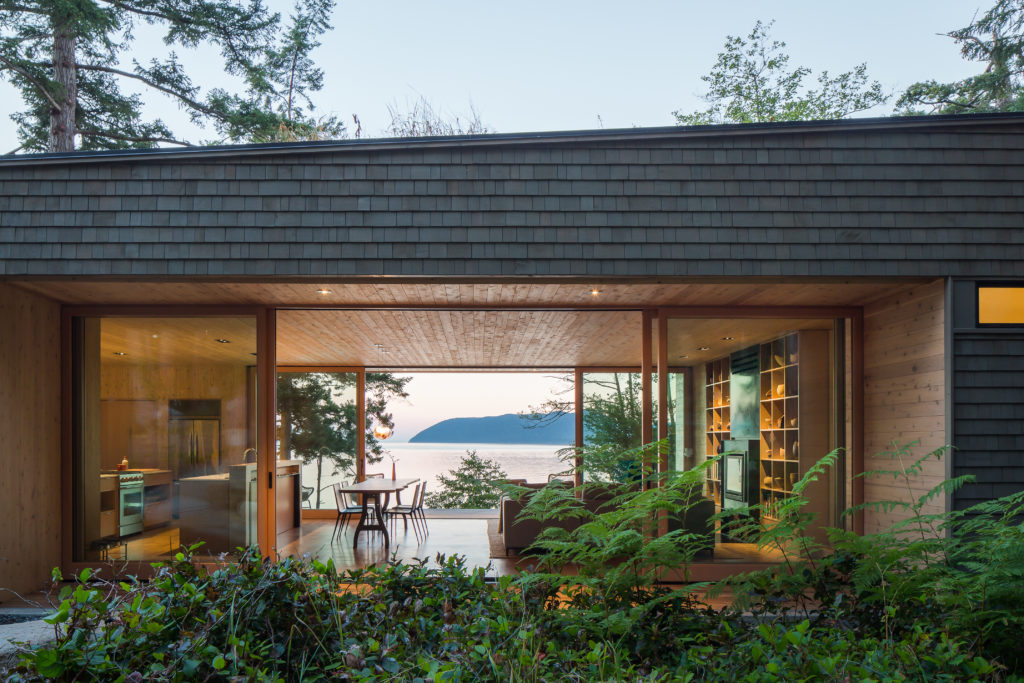
Photo Alex Hayden
When designing the Eight Bells residence in the Bahamas, how did you balance the area’s historic architecture with Heliotrope’s modern aesthetic?
JH: This project is located in an area with limited resources and technical expertise. Our clients preferred to work with local builders and keep the work within the local economy. This was also the less expensive approach, so long as we work within their comfort zone. We visited quite a few projects, old and new, to observe where the level of execution was most successful. Local stucco work is fantastic, as well as cedar shingle roofing (a feature dating back to the colonial era). We leveraged these skills in our design solution, and the form of the home responds to the primary drivers of wind, rain, and sun. This led to a building form and materiality not too dissimilar from historic homes on the island, but with a contemporary expression.
What modern designers and architecture firms are on your radar these days?
MM: Locally, Best Practice and GoCstudio are two Seattle firms run by great people doing fantastic work. Further afield, the restaurant designs produced by Ste. Marie out of Vancouver BC are incredibly well executed. O’Neill Rose in NYC and Mar Plus Ask in Berlin are both doing beautiful residential work. [Portugese architect] Aires Mateus might be the best, not-yet-famous architect currently practicing.
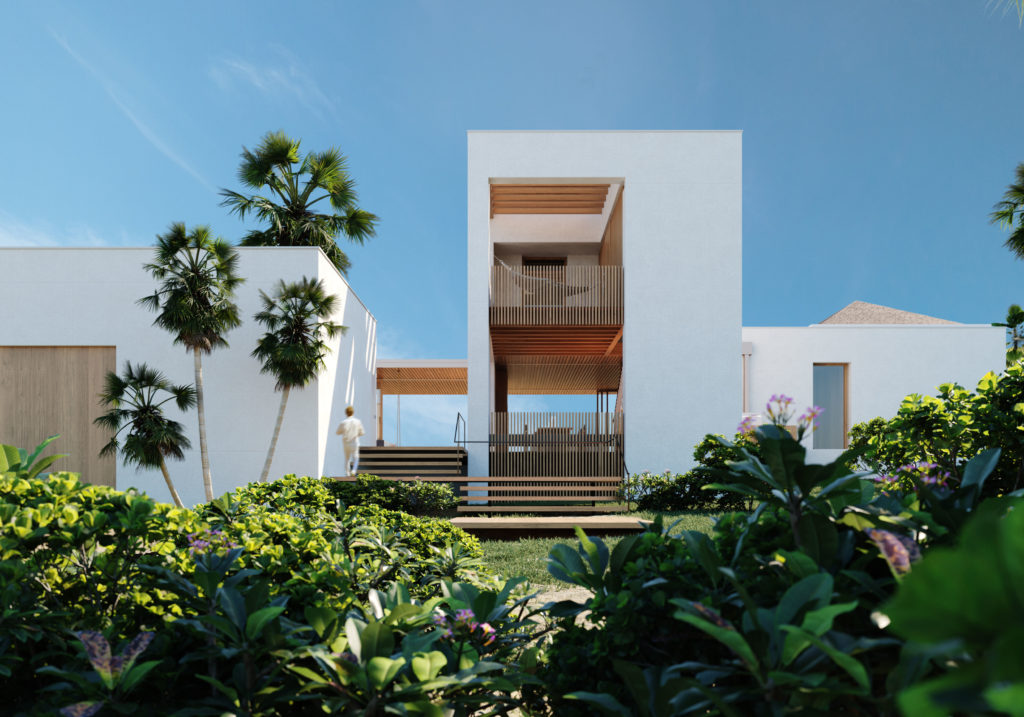
Rendering courtesy Notion Workshop and Heliotrope
What upcoming work are you most excited about?
JH: The pandemic has ended much of our commercial restaurant work for the time being. Fortunately, we have several new residential commissions, primarily in the San Juan Islands, that offer substantive design opportunities on spectacular sites. I grew up boating throughout the San Juans, and am writing this from our cabin on Orcas Island. The islands are my happy place.
How has your vision for Heliotrope changed since its founding in 1999? What has stayed the same?
JH: As young, ambitious architects Mike and I intended to do it all: museums, libraries, houses, towers – you name it. We were not business people and didn’t think much about “market focus”, consequently we tried a lot of different things in our first decade together, and made very little doing it. As years went by, we learned that true design excellence can most readily be achieved through repeated effort within a narrow range of project types. Our particular passions led us to custom homes and hospitality work, where we have happily parked ourselves for the last decade.
MM: I think Heliotrope is really just hitting its stride. We’ve got twenty years of experience under our belt, an amazing staff and studio space, tons of knowledge, great collaborators, and clients. Our best work is ahead of us. We’re very excited about the future.
